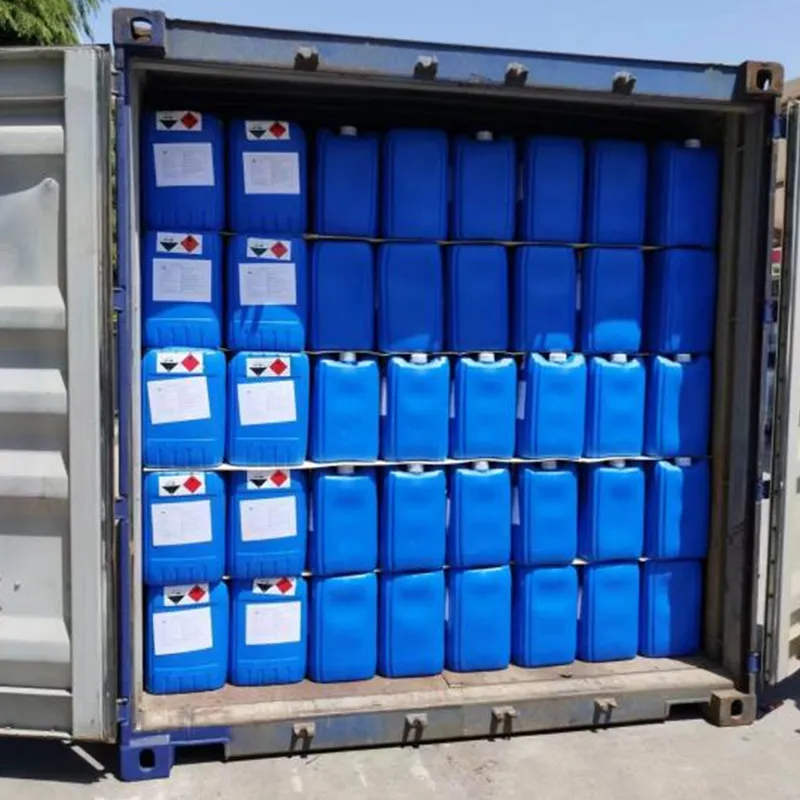
Exploring the Properties and Applications of Phosphoric Acid in Various Industries and Research Fields
The Role of Phosphoric Acid in Various Industries
Phosphoric acid, a key inorganic acid with the chemical formula H₃PO₄, plays an essential role across multiple industries, impacting everything from food production to agriculture and electronics. Understanding its properties, applications, and implications is crucial for appreciating its significance in modern manufacturing and everyday life.
Chemical Properties and Production
Phosphoric acid is a colorless, odorless liquid with a slightly viscous consistency. It is categorized as a triprotic acid, meaning it can donate three protons (H⁺ ions) in aqueous solution, resulting in its ability to interact with various compounds to form phosphates. Generally produced through the reaction of phosphoric pentoxide (P₂O₅) with water, phosphoric acid can also be synthesized from phosphate rock through the wet process involving sulfuric acid.
Applications in Food Industry
One of the most common applications of phosphoric acid is in food production. It is widely used as a food additive, categorized as E338, primarily for its tangy flavor and preservative properties. Phosphoric acid can be found in soft drinks, dairy products, and flavoring agents. In soft drinks, particularly cola, it not only contributes to the acidity and overall flavor profile but also acts as a stabilizing agent for beverage formulations. However, the consumption of phosphoric acid in large quantities has raised discussions about potential health risks, thus prompting regulatory bodies to scrutinize its usage levels in food products.
Agricultural Uses
phosphoric acid acid

In agriculture, phosphoric acid is a critical component in the production of fertilizers, which are essential for modern farming practices. Phosphate fertilizers derived from phosphoric acid provide crops with vital nutrients, promoting growth and improving yields. The formulation of fertilizers like monoammonium phosphate (MAP) and diammonium phosphate (DAP) relies significantly on phosphoric acid as a precursor. These fertilizers enhance phosphorus availability in the soil, which is crucial for plant metabolism, root development, and photosynthesis.
Role in Industrial Applications
Beyond food and agriculture, phosphoric acid is also instrumental in various industrial processes. It serves as a rust remover and metal cleaner, particularly in phosphating processes, which enhance the corrosion resistance of metals. This is evident in automotive and appliance manufacturing, where the application of phosphoric acid helps improve the longevity and durability of products. Additionally, it is utilized in the production of ceramics, pharmaceuticals, and personal care products, showcasing its versatility across different sectors.
Environmental Impact and Safety Considerations
While phosphoric acid is extensively used and has numerous benefits, it is essential to consider its environmental impact and safety. The mining of phosphate rock, necessary for phosphoric acid production, can lead to land degradation and ecosystem disturbances. Furthermore, improper disposal of phosphoric acid can contribute to water pollution, affecting aquatic life. Therefore, industries must implement stringent regulations and sustainable practices to mitigate these negative effects.
Conclusion
In conclusion, phosphoric acid is a vital compound that underscores its importance across multiple sectors, particularly in food production, agriculture, and manufacturing. While its applications bring significant advantages, they are accompanied by responsibilities regarding environmental stewardship and public health safety. As industries continue to evolve, focusing on more sustainable and efficient methods of utilizing phosphoric acid will be crucial for balancing economic benefits with ecological preservation. Understanding its complex role and implications will pave the way for responsible usage and innovations in its applications for the future.
-
nitrile-rubber-honoring-strict-production-standardsNewsAug.22,2025
-
aspartame-ingredients-honoring-food-safety-valuesNewsAug.22,2025
-
fertilizer-for-balanced-plant-nutritionNewsAug.22,2025
-
cyanide-gold-processing-with-high-purity-additivesNewsAug.22,2025
-
formic-acid-in-textile-dyeing-applicationsNewsAug.22,2025
-
aluminum-hydroxide-gel-in-skincare-productsNewsAug.22,2025
-
Regulatory Compliance for Global Mining Chemicals UseNewsAug.12,2025
Hebei Tenger Chemical Technology Co., Ltd. focuses on the chemical industry and is committed to the export service of chemical raw materials.
-

view more DiethanolisopropanolamineIn the ever-growing field of chemical solutions, diethanolisopropanolamine (DEIPA) stands out as a versatile and important compound. Due to its unique chemical structure and properties, DEIPA is of interest to various industries including construction, personal care, and agriculture. -

view more TriisopropanolamineTriisopropanolamine (TIPA) alkanol amine substance, is a kind of alcohol amine compound with amino and alcohol hydroxyl, and because of its molecules contains both amino and hydroxyl. -

view more Tetramethyl Thiuram DisulfideTetramethyl thiuram disulfide, also known as TMTD, is a white to light-yellow powder with a distinct sulfur-like odor. It is soluble in organic solvents such as benzene, acetone, and ethyl acetate, making it highly versatile for use in different formulations. TMTD is known for its excellent vulcanization acceleration properties, which makes it a key ingredient in the production of rubber products. Additionally, it acts as an effective fungicide and bactericide, making it valuable in agricultural applications. Its high purity and stability ensure consistent performance, making it a preferred choice for manufacturers across various industries.





